I was not one of those picky children who wouldn’t eat the green things on my plate (except lima beans), but heartily enjoyed any type of produce. Tomatoes, with their natural sweetness, were and still are one of my favorites. Flash forward many years, and I couldn’t wait to learn how to grow tomatoes. Over the years there have been successes and failures but I have learned quite a bit and can now confidently anticipate bumper crops of gorgeous fruit.
1. Variety Is Everything
As a chef, I love to make my own sauces. The best tomatoes for this are fleshy fruits like plum tomatoes and Roma tomatoes. Want to learn everything there is to know about growing your own tomatoes? San Marzano tomatoes make the most beautiful, tasty sauce and are among the best canning tomatoes. My first San Marzano plant was grown in a patio container. I luckily had plenty of light in the area and used a purchased vegetable soil. It was that year I learned to can because I had too many fruits for one person. This variety can be hard to find where I live, so I save seeds and start them inside. Roma tomatoes are another excellent saucing tomato. I even like them fresh on sandwiches or paired with fresh mozzarella and basil. Few things taste as delicious when drizzled with good quality olive oil and freshly cracked black pepper. Another favorite variety is the “Mortgage Lifter” tomato, which is a truly astounding producer. “Mortgage Lifter” has a funny back story, as the breeder of the tomato sold enough tomatoes in 6 years to pay off his mortgage. Of course, you need to grow some slicing tomatoes. In my zone, “Early Girl” tomatoes are ideal because we have a rather short summer. Heirloom tomatoes are also a great choice for cooks who want to experiment with different varieties and flavors.
2. Kitchen Scraps Equal Black Gold
I hate waste – I absolutely abhor it. So I have a compost tumbler as well as several heaps for making organic compost. The piles are for garden waste, but my tumbler is the source of much of my soil. It makes quick work turning kitchen scraps into the perfect amendment for my tomatoes. Your go-to for a reliable and tasty slicing tomato. Known for its high yields and speedy arrival, this variety gives you ripe, red fruits in just 57 days from transplant. This authentic Italian plum tomato is perfect for creating robust sauces. It’s a breeze to cultivate, disease-resistant, and produces bountiful harvests throughout the summer. Looking for a colorful twist in your garden? This mix offers six unique and captivating heirloom tomato varieties, ensuring a vibrant and tasty harvest. Over the years, I have planted tomatoes in rather poor soil and got the result one might expect. So I now dig in some of my tumbler compost combined with leaf litter and other additives. The compost enriches the soil and increases percolation, so the tomatoes don’t have wet feet, while retaining moisture. I have also used manure but I will never get the free stuff from the local rancher again. The manure harbored residue from broadleaf herbicide. This is particularly damaging to nightshade vegetables, such as tomatoes. My tomatoes and peppers that year were stunted, sickly, and didn’t produce any fruit no matter how hard I tried. Source clean, safe manure if you choose to go that route.
3. Focus On Feeding and Watering
Like any living thing, food and water are crucial to the survival, health, and fruit production of tomato plants. Watering tomato plants is best done daily in the morning, taking care to water only the soil. In triple-digit heat, I’ve had to water twice per day. Turn your organic waste into nutrient-dense garden bed material with an in-ground worm composter. Dig a hole in the ground, bury the composter, fill it with organic waste and worms, and let nature do the work. Regular price $59.95 Overwatering can cause the fruit to split so I make sure the top surface of the soil is dry before I irrigate. Fertilizing tomatoes is essential as the fruits are heavy feeders. I garden organically so I do not use synthetic fertilizers. I use bonemeal worked into the soil around young plants about a month after transplant. During flowering, the plant needs an extra shot of potassium. This is when I use my homemade tomato fertilizer, and the banana peels I dried in the dehydrator are put to good use. I pulse these up in my food processor and mix the powder into the soil. Once fruits are beginning, I work Epsom salts into my soil. This is controversial but I think it works. I also spread crushed eggshells around the root zone in hopes of avoiding blossom end rot.
4. Harvesting Is All About Timing
I only start harvesting tomatoes when the fruit is brightly colored and plump. My determinate tomato varieties are mostly used fresh since they produce all summer. Determinate types will ripen almost all at once. Vego Garden’s tomato planter is the perfect way to allow tomatoes to thrive, delivering water to plants without having to worry about overflow. Fill it once to water your plant for several weeks. Regular price $129.95. Tomatoes will continue to ripen after picking but the best flavor is from fruits left to ripen to their peak. I don’t refrigerate my picked tomatoes as this ruins the flavor in my opinion. Leave them on the counter but use them before they begin to get too soft. I can diced tomatoes and sauce. When I am overrun with fruit, I slice it and dehydrate it. I freeze some tomatoes as sauce and I give a lot of fruit away to the food bank. With a bit of work, I can enjoy my homegrown tomatoes all year. This article features products available from third-party vendors on the Gardening Know How Shop.
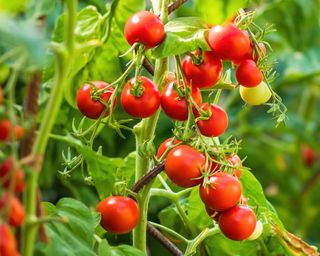
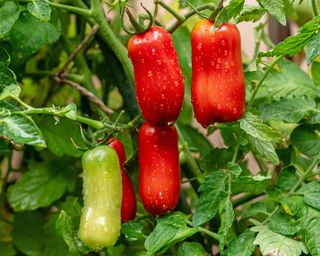
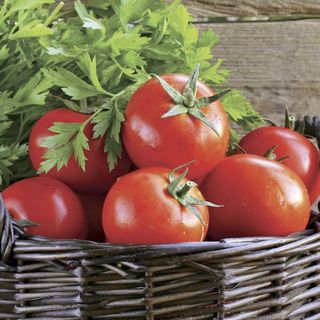
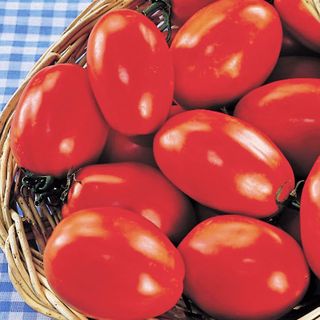
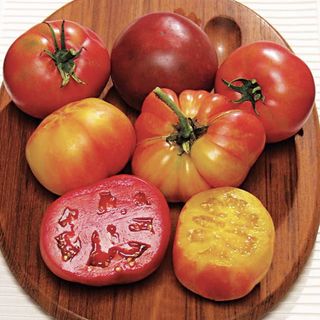
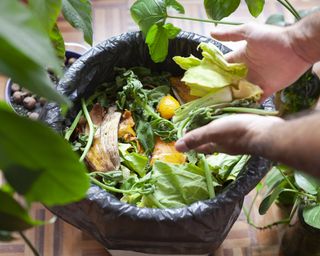
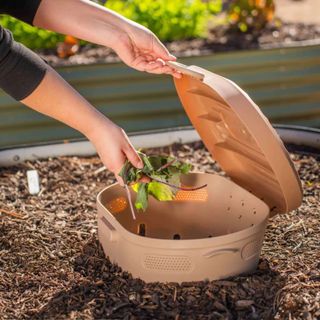
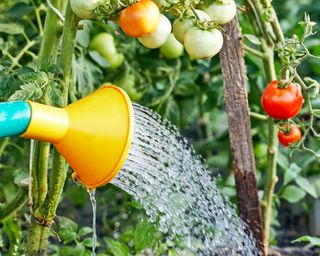
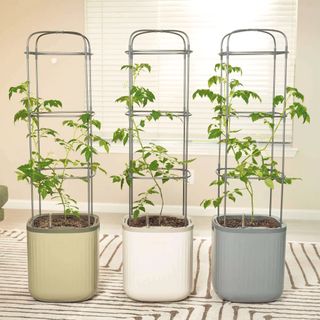
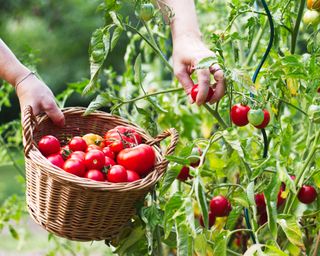
title: “The Secret To Growing Tomatoes By A Chef Turned Gardener” ShowToc: true date: “2024-10-05” author: “Ginger Spears”
I was not one of those picky children who wouldn’t eat the green things on my plate (except lima beans), but heartily enjoyed any type of produce. Tomatoes, with their natural sweetness, were and still are one of my favorites. Flash forward many years, and I couldn’t wait to learn how to grow tomatoes. Over the years there have been successes and failures but I have learned quite a bit and can now confidently anticipate bumper crops of gorgeous fruit.
1. Variety Is Everything
As a chef, I love to make my own sauces. The best tomatoes for this are fleshy fruits like plum tomatoes and Roma tomatoes. Want to learn everything there is to know about growing your own tomatoes? San Marzano tomatoes make the most beautiful, tasty sauce and are among the best canning tomatoes. My first San Marzano plant was grown in a patio container. I luckily had plenty of light in the area and used a purchased vegetable soil. It was that year I learned to can because I had too many fruits for one person. This variety can be hard to find where I live, so I save seeds and start them inside. Roma tomatoes are another excellent saucing tomato. I even like them fresh on sandwiches or paired with fresh mozzarella and basil. Few things taste as delicious when drizzled with good quality olive oil and freshly cracked black pepper. Another favorite variety is the “Mortgage Lifter” tomato, which is a truly astounding producer. “Mortgage Lifter” has a funny back story, as the breeder of the tomato sold enough tomatoes in 6 years to pay off his mortgage. Of course, you need to grow some slicing tomatoes. In my zone, “Early Girl” tomatoes are ideal because we have a rather short summer. Heirloom tomatoes are also a great choice for cooks who want to experiment with different varieties and flavors.
2. Kitchen Scraps Equal Black Gold
I hate waste – I absolutely abhor it. So I have a compost tumbler as well as several heaps for making organic compost. The piles are for garden waste, but my tumbler is the source of much of my soil. It makes quick work turning kitchen scraps into the perfect amendment for my tomatoes. Your go-to for a reliable and tasty slicing tomato. Known for its high yields and speedy arrival, this variety gives you ripe, red fruits in just 57 days from transplant. This authentic Italian plum tomato is perfect for creating robust sauces. It’s a breeze to cultivate, disease-resistant, and produces bountiful harvests throughout the summer. Looking for a colorful twist in your garden? This mix offers six unique and captivating heirloom tomato varieties, ensuring a vibrant and tasty harvest. Over the years, I have planted tomatoes in rather poor soil and got the result one might expect. So I now dig in some of my tumbler compost combined with leaf litter and other additives. The compost enriches the soil and increases percolation, so the tomatoes don’t have wet feet, while retaining moisture. I have also used manure but I will never get the free stuff from the local rancher again. The manure harbored residue from broadleaf herbicide. This is particularly damaging to nightshade vegetables, such as tomatoes. My tomatoes and peppers that year were stunted, sickly, and didn’t produce any fruit no matter how hard I tried. Source clean, safe manure if you choose to go that route.
3. Focus On Feeding and Watering
Like any living thing, food and water are crucial to the survival, health, and fruit production of tomato plants. Watering tomato plants is best done daily in the morning, taking care to water only the soil. In triple-digit heat, I’ve had to water twice per day. Turn your organic waste into nutrient-dense garden bed material with an in-ground worm composter. Dig a hole in the ground, bury the composter, fill it with organic waste and worms, and let nature do the work. Regular price $59.95 Overwatering can cause the fruit to split so I make sure the top surface of the soil is dry before I irrigate. Fertilizing tomatoes is essential as the fruits are heavy feeders. I garden organically so I do not use synthetic fertilizers. I use bonemeal worked into the soil around young plants about a month after transplant. During flowering, the plant needs an extra shot of potassium. This is when I use my homemade tomato fertilizer, and the banana peels I dried in the dehydrator are put to good use. I pulse these up in my food processor and mix the powder into the soil. Once fruits are beginning, I work Epsom salts into my soil. This is controversial but I think it works. I also spread crushed eggshells around the root zone in hopes of avoiding blossom end rot.
4. Harvesting Is All About Timing
I only start harvesting tomatoes when the fruit is brightly colored and plump. My determinate tomato varieties are mostly used fresh since they produce all summer. Determinate types will ripen almost all at once. Vego Garden’s tomato planter is the perfect way to allow tomatoes to thrive, delivering water to plants without having to worry about overflow. Fill it once to water your plant for several weeks. Regular price $129.95. Tomatoes will continue to ripen after picking but the best flavor is from fruits left to ripen to their peak. I don’t refrigerate my picked tomatoes as this ruins the flavor in my opinion. Leave them on the counter but use them before they begin to get too soft. I can diced tomatoes and sauce. When I am overrun with fruit, I slice it and dehydrate it. I freeze some tomatoes as sauce and I give a lot of fruit away to the food bank. With a bit of work, I can enjoy my homegrown tomatoes all year. This article features products available from third-party vendors on the Gardening Know How Shop.










title: “The Secret To Growing Tomatoes By A Chef Turned Gardener” ShowToc: true date: “2024-08-27” author: “Mack Bays”
I was not one of those picky children who wouldn’t eat the green things on my plate (except lima beans), but heartily enjoyed any type of produce. Tomatoes, with their natural sweetness, were and still are one of my favorites. Flash forward many years, and I couldn’t wait to learn how to grow tomatoes. Over the years there have been successes and failures but I have learned quite a bit and can now confidently anticipate bumper crops of gorgeous fruit.
1. Variety Is Everything
As a chef, I love to make my own sauces. The best tomatoes for this are fleshy fruits like plum tomatoes and Roma tomatoes. Want to learn everything there is to know about growing your own tomatoes? San Marzano tomatoes make the most beautiful, tasty sauce and are among the best canning tomatoes. My first San Marzano plant was grown in a patio container. I luckily had plenty of light in the area and used a purchased vegetable soil. It was that year I learned to can because I had too many fruits for one person. This variety can be hard to find where I live, so I save seeds and start them inside. Roma tomatoes are another excellent saucing tomato. I even like them fresh on sandwiches or paired with fresh mozzarella and basil. Few things taste as delicious when drizzled with good quality olive oil and freshly cracked black pepper. Another favorite variety is the “Mortgage Lifter” tomato, which is a truly astounding producer. “Mortgage Lifter” has a funny back story, as the breeder of the tomato sold enough tomatoes in 6 years to pay off his mortgage. Of course, you need to grow some slicing tomatoes. In my zone, “Early Girl” tomatoes are ideal because we have a rather short summer. Heirloom tomatoes are also a great choice for cooks who want to experiment with different varieties and flavors.
2. Kitchen Scraps Equal Black Gold
I hate waste – I absolutely abhor it. So I have a compost tumbler as well as several heaps for making organic compost. The piles are for garden waste, but my tumbler is the source of much of my soil. It makes quick work turning kitchen scraps into the perfect amendment for my tomatoes. Your go-to for a reliable and tasty slicing tomato. Known for its high yields and speedy arrival, this variety gives you ripe, red fruits in just 57 days from transplant. This authentic Italian plum tomato is perfect for creating robust sauces. It’s a breeze to cultivate, disease-resistant, and produces bountiful harvests throughout the summer. Looking for a colorful twist in your garden? This mix offers six unique and captivating heirloom tomato varieties, ensuring a vibrant and tasty harvest. Over the years, I have planted tomatoes in rather poor soil and got the result one might expect. So I now dig in some of my tumbler compost combined with leaf litter and other additives. The compost enriches the soil and increases percolation, so the tomatoes don’t have wet feet, while retaining moisture. I have also used manure but I will never get the free stuff from the local rancher again. The manure harbored residue from broadleaf herbicide. This is particularly damaging to nightshade vegetables, such as tomatoes. My tomatoes and peppers that year were stunted, sickly, and didn’t produce any fruit no matter how hard I tried. Source clean, safe manure if you choose to go that route.
3. Focus On Feeding and Watering
Like any living thing, food and water are crucial to the survival, health, and fruit production of tomato plants. Watering tomato plants is best done daily in the morning, taking care to water only the soil. In triple-digit heat, I’ve had to water twice per day. Turn your organic waste into nutrient-dense garden bed material with an in-ground worm composter. Dig a hole in the ground, bury the composter, fill it with organic waste and worms, and let nature do the work. Regular price $59.95 Overwatering can cause the fruit to split so I make sure the top surface of the soil is dry before I irrigate. Fertilizing tomatoes is essential as the fruits are heavy feeders. I garden organically so I do not use synthetic fertilizers. I use bonemeal worked into the soil around young plants about a month after transplant. During flowering, the plant needs an extra shot of potassium. This is when I use my homemade tomato fertilizer, and the banana peels I dried in the dehydrator are put to good use. I pulse these up in my food processor and mix the powder into the soil. Once fruits are beginning, I work Epsom salts into my soil. This is controversial but I think it works. I also spread crushed eggshells around the root zone in hopes of avoiding blossom end rot.
4. Harvesting Is All About Timing
I only start harvesting tomatoes when the fruit is brightly colored and plump. My determinate tomato varieties are mostly used fresh since they produce all summer. Determinate types will ripen almost all at once. Vego Garden’s tomato planter is the perfect way to allow tomatoes to thrive, delivering water to plants without having to worry about overflow. Fill it once to water your plant for several weeks. Regular price $129.95. Tomatoes will continue to ripen after picking but the best flavor is from fruits left to ripen to their peak. I don’t refrigerate my picked tomatoes as this ruins the flavor in my opinion. Leave them on the counter but use them before they begin to get too soft. I can diced tomatoes and sauce. When I am overrun with fruit, I slice it and dehydrate it. I freeze some tomatoes as sauce and I give a lot of fruit away to the food bank. With a bit of work, I can enjoy my homegrown tomatoes all year. This article features products available from third-party vendors on the Gardening Know How Shop.










title: “The Secret To Growing Tomatoes By A Chef Turned Gardener” ShowToc: true date: “2024-09-17” author: “Stephanie Schwartz”
I was not one of those picky children who wouldn’t eat the green things on my plate (except lima beans), but heartily enjoyed any type of produce. Tomatoes, with their natural sweetness, were and still are one of my favorites. Flash forward many years, and I couldn’t wait to learn how to grow tomatoes. Over the years there have been successes and failures but I have learned quite a bit and can now confidently anticipate bumper crops of gorgeous fruit.
1. Variety Is Everything
As a chef, I love to make my own sauces. The best tomatoes for this are fleshy fruits like plum tomatoes and Roma tomatoes. Want to learn everything there is to know about growing your own tomatoes? San Marzano tomatoes make the most beautiful, tasty sauce and are among the best canning tomatoes. My first San Marzano plant was grown in a patio container. I luckily had plenty of light in the area and used a purchased vegetable soil. It was that year I learned to can because I had too many fruits for one person. This variety can be hard to find where I live, so I save seeds and start them inside. Roma tomatoes are another excellent saucing tomato. I even like them fresh on sandwiches or paired with fresh mozzarella and basil. Few things taste as delicious when drizzled with good quality olive oil and freshly cracked black pepper. Another favorite variety is the “Mortgage Lifter” tomato, which is a truly astounding producer. “Mortgage Lifter” has a funny back story, as the breeder of the tomato sold enough tomatoes in 6 years to pay off his mortgage. Of course, you need to grow some slicing tomatoes. In my zone, “Early Girl” tomatoes are ideal because we have a rather short summer. Heirloom tomatoes are also a great choice for cooks who want to experiment with different varieties and flavors.
2. Kitchen Scraps Equal Black Gold
I hate waste – I absolutely abhor it. So I have a compost tumbler as well as several heaps for making organic compost. The piles are for garden waste, but my tumbler is the source of much of my soil. It makes quick work turning kitchen scraps into the perfect amendment for my tomatoes. Your go-to for a reliable and tasty slicing tomato. Known for its high yields and speedy arrival, this variety gives you ripe, red fruits in just 57 days from transplant. This authentic Italian plum tomato is perfect for creating robust sauces. It’s a breeze to cultivate, disease-resistant, and produces bountiful harvests throughout the summer. Looking for a colorful twist in your garden? This mix offers six unique and captivating heirloom tomato varieties, ensuring a vibrant and tasty harvest. Over the years, I have planted tomatoes in rather poor soil and got the result one might expect. So I now dig in some of my tumbler compost combined with leaf litter and other additives. The compost enriches the soil and increases percolation, so the tomatoes don’t have wet feet, while retaining moisture. I have also used manure but I will never get the free stuff from the local rancher again. The manure harbored residue from broadleaf herbicide. This is particularly damaging to nightshade vegetables, such as tomatoes. My tomatoes and peppers that year were stunted, sickly, and didn’t produce any fruit no matter how hard I tried. Source clean, safe manure if you choose to go that route.
3. Focus On Feeding and Watering
Like any living thing, food and water are crucial to the survival, health, and fruit production of tomato plants. Watering tomato plants is best done daily in the morning, taking care to water only the soil. In triple-digit heat, I’ve had to water twice per day. Turn your organic waste into nutrient-dense garden bed material with an in-ground worm composter. Dig a hole in the ground, bury the composter, fill it with organic waste and worms, and let nature do the work. Regular price $59.95 Overwatering can cause the fruit to split so I make sure the top surface of the soil is dry before I irrigate. Fertilizing tomatoes is essential as the fruits are heavy feeders. I garden organically so I do not use synthetic fertilizers. I use bonemeal worked into the soil around young plants about a month after transplant. During flowering, the plant needs an extra shot of potassium. This is when I use my homemade tomato fertilizer, and the banana peels I dried in the dehydrator are put to good use. I pulse these up in my food processor and mix the powder into the soil. Once fruits are beginning, I work Epsom salts into my soil. This is controversial but I think it works. I also spread crushed eggshells around the root zone in hopes of avoiding blossom end rot.
4. Harvesting Is All About Timing
I only start harvesting tomatoes when the fruit is brightly colored and plump. My determinate tomato varieties are mostly used fresh since they produce all summer. Determinate types will ripen almost all at once. Vego Garden’s tomato planter is the perfect way to allow tomatoes to thrive, delivering water to plants without having to worry about overflow. Fill it once to water your plant for several weeks. Regular price $129.95. Tomatoes will continue to ripen after picking but the best flavor is from fruits left to ripen to their peak. I don’t refrigerate my picked tomatoes as this ruins the flavor in my opinion. Leave them on the counter but use them before they begin to get too soft. I can diced tomatoes and sauce. When I am overrun with fruit, I slice it and dehydrate it. I freeze some tomatoes as sauce and I give a lot of fruit away to the food bank. With a bit of work, I can enjoy my homegrown tomatoes all year. This article features products available from third-party vendors on the Gardening Know How Shop.










title: “The Secret To Growing Tomatoes By A Chef Turned Gardener” ShowToc: true date: “2024-09-26” author: “Jerome Gray”
I was not one of those picky children who wouldn’t eat the green things on my plate (except lima beans), but heartily enjoyed any type of produce. Tomatoes, with their natural sweetness, were and still are one of my favorites. Flash forward many years, and I couldn’t wait to learn how to grow tomatoes. Over the years there have been successes and failures but I have learned quite a bit and can now confidently anticipate bumper crops of gorgeous fruit.
1. Variety Is Everything
As a chef, I love to make my own sauces. The best tomatoes for this are fleshy fruits like plum tomatoes and Roma tomatoes. Want to learn everything there is to know about growing your own tomatoes? San Marzano tomatoes make the most beautiful, tasty sauce and are among the best canning tomatoes. My first San Marzano plant was grown in a patio container. I luckily had plenty of light in the area and used a purchased vegetable soil. It was that year I learned to can because I had too many fruits for one person. This variety can be hard to find where I live, so I save seeds and start them inside. Roma tomatoes are another excellent saucing tomato. I even like them fresh on sandwiches or paired with fresh mozzarella and basil. Few things taste as delicious when drizzled with good quality olive oil and freshly cracked black pepper. Another favorite variety is the “Mortgage Lifter” tomato, which is a truly astounding producer. “Mortgage Lifter” has a funny back story, as the breeder of the tomato sold enough tomatoes in 6 years to pay off his mortgage. Of course, you need to grow some slicing tomatoes. In my zone, “Early Girl” tomatoes are ideal because we have a rather short summer. Heirloom tomatoes are also a great choice for cooks who want to experiment with different varieties and flavors.
2. Kitchen Scraps Equal Black Gold
I hate waste – I absolutely abhor it. So I have a compost tumbler as well as several heaps for making organic compost. The piles are for garden waste, but my tumbler is the source of much of my soil. It makes quick work turning kitchen scraps into the perfect amendment for my tomatoes. Your go-to for a reliable and tasty slicing tomato. Known for its high yields and speedy arrival, this variety gives you ripe, red fruits in just 57 days from transplant. This authentic Italian plum tomato is perfect for creating robust sauces. It’s a breeze to cultivate, disease-resistant, and produces bountiful harvests throughout the summer. Looking for a colorful twist in your garden? This mix offers six unique and captivating heirloom tomato varieties, ensuring a vibrant and tasty harvest. Over the years, I have planted tomatoes in rather poor soil and got the result one might expect. So I now dig in some of my tumbler compost combined with leaf litter and other additives. The compost enriches the soil and increases percolation, so the tomatoes don’t have wet feet, while retaining moisture. I have also used manure but I will never get the free stuff from the local rancher again. The manure harbored residue from broadleaf herbicide. This is particularly damaging to nightshade vegetables, such as tomatoes. My tomatoes and peppers that year were stunted, sickly, and didn’t produce any fruit no matter how hard I tried. Source clean, safe manure if you choose to go that route.
3. Focus On Feeding and Watering
Like any living thing, food and water are crucial to the survival, health, and fruit production of tomato plants. Watering tomato plants is best done daily in the morning, taking care to water only the soil. In triple-digit heat, I’ve had to water twice per day. Turn your organic waste into nutrient-dense garden bed material with an in-ground worm composter. Dig a hole in the ground, bury the composter, fill it with organic waste and worms, and let nature do the work. Regular price $59.95 Overwatering can cause the fruit to split so I make sure the top surface of the soil is dry before I irrigate. Fertilizing tomatoes is essential as the fruits are heavy feeders. I garden organically so I do not use synthetic fertilizers. I use bonemeal worked into the soil around young plants about a month after transplant. During flowering, the plant needs an extra shot of potassium. This is when I use my homemade tomato fertilizer, and the banana peels I dried in the dehydrator are put to good use. I pulse these up in my food processor and mix the powder into the soil. Once fruits are beginning, I work Epsom salts into my soil. This is controversial but I think it works. I also spread crushed eggshells around the root zone in hopes of avoiding blossom end rot.
4. Harvesting Is All About Timing
I only start harvesting tomatoes when the fruit is brightly colored and plump. My determinate tomato varieties are mostly used fresh since they produce all summer. Determinate types will ripen almost all at once. Vego Garden’s tomato planter is the perfect way to allow tomatoes to thrive, delivering water to plants without having to worry about overflow. Fill it once to water your plant for several weeks. Regular price $129.95. Tomatoes will continue to ripen after picking but the best flavor is from fruits left to ripen to their peak. I don’t refrigerate my picked tomatoes as this ruins the flavor in my opinion. Leave them on the counter but use them before they begin to get too soft. I can diced tomatoes and sauce. When I am overrun with fruit, I slice it and dehydrate it. I freeze some tomatoes as sauce and I give a lot of fruit away to the food bank. With a bit of work, I can enjoy my homegrown tomatoes all year. This article features products available from third-party vendors on the Gardening Know How Shop.










title: “The Secret To Growing Tomatoes By A Chef Turned Gardener” ShowToc: true date: “2024-09-09” author: “Peggy Hall”
I was not one of those picky children who wouldn’t eat the green things on my plate (except lima beans), but heartily enjoyed any type of produce. Tomatoes, with their natural sweetness, were and still are one of my favorites. Flash forward many years, and I couldn’t wait to learn how to grow tomatoes. Over the years there have been successes and failures but I have learned quite a bit and can now confidently anticipate bumper crops of gorgeous fruit.
1. Variety Is Everything
As a chef, I love to make my own sauces. The best tomatoes for this are fleshy fruits like plum tomatoes and Roma tomatoes. Want to learn everything there is to know about growing your own tomatoes? San Marzano tomatoes make the most beautiful, tasty sauce and are among the best canning tomatoes. My first San Marzano plant was grown in a patio container. I luckily had plenty of light in the area and used a purchased vegetable soil. It was that year I learned to can because I had too many fruits for one person. This variety can be hard to find where I live, so I save seeds and start them inside. Roma tomatoes are another excellent saucing tomato. I even like them fresh on sandwiches or paired with fresh mozzarella and basil. Few things taste as delicious when drizzled with good quality olive oil and freshly cracked black pepper. Another favorite variety is the “Mortgage Lifter” tomato, which is a truly astounding producer. “Mortgage Lifter” has a funny back story, as the breeder of the tomato sold enough tomatoes in 6 years to pay off his mortgage. Of course, you need to grow some slicing tomatoes. In my zone, “Early Girl” tomatoes are ideal because we have a rather short summer. Heirloom tomatoes are also a great choice for cooks who want to experiment with different varieties and flavors.
2. Kitchen Scraps Equal Black Gold
I hate waste – I absolutely abhor it. So I have a compost tumbler as well as several heaps for making organic compost. The piles are for garden waste, but my tumbler is the source of much of my soil. It makes quick work turning kitchen scraps into the perfect amendment for my tomatoes. Your go-to for a reliable and tasty slicing tomato. Known for its high yields and speedy arrival, this variety gives you ripe, red fruits in just 57 days from transplant. This authentic Italian plum tomato is perfect for creating robust sauces. It’s a breeze to cultivate, disease-resistant, and produces bountiful harvests throughout the summer. Looking for a colorful twist in your garden? This mix offers six unique and captivating heirloom tomato varieties, ensuring a vibrant and tasty harvest. Over the years, I have planted tomatoes in rather poor soil and got the result one might expect. So I now dig in some of my tumbler compost combined with leaf litter and other additives. The compost enriches the soil and increases percolation, so the tomatoes don’t have wet feet, while retaining moisture. I have also used manure but I will never get the free stuff from the local rancher again. The manure harbored residue from broadleaf herbicide. This is particularly damaging to nightshade vegetables, such as tomatoes. My tomatoes and peppers that year were stunted, sickly, and didn’t produce any fruit no matter how hard I tried. Source clean, safe manure if you choose to go that route.
3. Focus On Feeding and Watering
Like any living thing, food and water are crucial to the survival, health, and fruit production of tomato plants. Watering tomato plants is best done daily in the morning, taking care to water only the soil. In triple-digit heat, I’ve had to water twice per day. Turn your organic waste into nutrient-dense garden bed material with an in-ground worm composter. Dig a hole in the ground, bury the composter, fill it with organic waste and worms, and let nature do the work. Regular price $59.95 Overwatering can cause the fruit to split so I make sure the top surface of the soil is dry before I irrigate. Fertilizing tomatoes is essential as the fruits are heavy feeders. I garden organically so I do not use synthetic fertilizers. I use bonemeal worked into the soil around young plants about a month after transplant. During flowering, the plant needs an extra shot of potassium. This is when I use my homemade tomato fertilizer, and the banana peels I dried in the dehydrator are put to good use. I pulse these up in my food processor and mix the powder into the soil. Once fruits are beginning, I work Epsom salts into my soil. This is controversial but I think it works. I also spread crushed eggshells around the root zone in hopes of avoiding blossom end rot.
4. Harvesting Is All About Timing
I only start harvesting tomatoes when the fruit is brightly colored and plump. My determinate tomato varieties are mostly used fresh since they produce all summer. Determinate types will ripen almost all at once. Vego Garden’s tomato planter is the perfect way to allow tomatoes to thrive, delivering water to plants without having to worry about overflow. Fill it once to water your plant for several weeks. Regular price $129.95. Tomatoes will continue to ripen after picking but the best flavor is from fruits left to ripen to their peak. I don’t refrigerate my picked tomatoes as this ruins the flavor in my opinion. Leave them on the counter but use them before they begin to get too soft. I can diced tomatoes and sauce. When I am overrun with fruit, I slice it and dehydrate it. I freeze some tomatoes as sauce and I give a lot of fruit away to the food bank. With a bit of work, I can enjoy my homegrown tomatoes all year. This article features products available from third-party vendors on the Gardening Know How Shop.










title: “The Secret To Growing Tomatoes By A Chef Turned Gardener” ShowToc: true date: “2024-08-27” author: “Margaret Johnson”
I was not one of those picky children who wouldn’t eat the green things on my plate (except lima beans), but heartily enjoyed any type of produce. Tomatoes, with their natural sweetness, were and still are one of my favorites. Flash forward many years, and I couldn’t wait to learn how to grow tomatoes. Over the years there have been successes and failures but I have learned quite a bit and can now confidently anticipate bumper crops of gorgeous fruit.
1. Variety Is Everything
As a chef, I love to make my own sauces. The best tomatoes for this are fleshy fruits like plum tomatoes and Roma tomatoes. Want to learn everything there is to know about growing your own tomatoes? San Marzano tomatoes make the most beautiful, tasty sauce and are among the best canning tomatoes. My first San Marzano plant was grown in a patio container. I luckily had plenty of light in the area and used a purchased vegetable soil. It was that year I learned to can because I had too many fruits for one person. This variety can be hard to find where I live, so I save seeds and start them inside. Roma tomatoes are another excellent saucing tomato. I even like them fresh on sandwiches or paired with fresh mozzarella and basil. Few things taste as delicious when drizzled with good quality olive oil and freshly cracked black pepper. Another favorite variety is the “Mortgage Lifter” tomato, which is a truly astounding producer. “Mortgage Lifter” has a funny back story, as the breeder of the tomato sold enough tomatoes in 6 years to pay off his mortgage. Of course, you need to grow some slicing tomatoes. In my zone, “Early Girl” tomatoes are ideal because we have a rather short summer. Heirloom tomatoes are also a great choice for cooks who want to experiment with different varieties and flavors.
2. Kitchen Scraps Equal Black Gold
I hate waste – I absolutely abhor it. So I have a compost tumbler as well as several heaps for making organic compost. The piles are for garden waste, but my tumbler is the source of much of my soil. It makes quick work turning kitchen scraps into the perfect amendment for my tomatoes. Your go-to for a reliable and tasty slicing tomato. Known for its high yields and speedy arrival, this variety gives you ripe, red fruits in just 57 days from transplant. This authentic Italian plum tomato is perfect for creating robust sauces. It’s a breeze to cultivate, disease-resistant, and produces bountiful harvests throughout the summer. Looking for a colorful twist in your garden? This mix offers six unique and captivating heirloom tomato varieties, ensuring a vibrant and tasty harvest. Over the years, I have planted tomatoes in rather poor soil and got the result one might expect. So I now dig in some of my tumbler compost combined with leaf litter and other additives. The compost enriches the soil and increases percolation, so the tomatoes don’t have wet feet, while retaining moisture. I have also used manure but I will never get the free stuff from the local rancher again. The manure harbored residue from broadleaf herbicide. This is particularly damaging to nightshade vegetables, such as tomatoes. My tomatoes and peppers that year were stunted, sickly, and didn’t produce any fruit no matter how hard I tried. Source clean, safe manure if you choose to go that route.
3. Focus On Feeding and Watering
Like any living thing, food and water are crucial to the survival, health, and fruit production of tomato plants. Watering tomato plants is best done daily in the morning, taking care to water only the soil. In triple-digit heat, I’ve had to water twice per day. Turn your organic waste into nutrient-dense garden bed material with an in-ground worm composter. Dig a hole in the ground, bury the composter, fill it with organic waste and worms, and let nature do the work. Regular price $59.95 Overwatering can cause the fruit to split so I make sure the top surface of the soil is dry before I irrigate. Fertilizing tomatoes is essential as the fruits are heavy feeders. I garden organically so I do not use synthetic fertilizers. I use bonemeal worked into the soil around young plants about a month after transplant. During flowering, the plant needs an extra shot of potassium. This is when I use my homemade tomato fertilizer, and the banana peels I dried in the dehydrator are put to good use. I pulse these up in my food processor and mix the powder into the soil. Once fruits are beginning, I work Epsom salts into my soil. This is controversial but I think it works. I also spread crushed eggshells around the root zone in hopes of avoiding blossom end rot.
4. Harvesting Is All About Timing
I only start harvesting tomatoes when the fruit is brightly colored and plump. My determinate tomato varieties are mostly used fresh since they produce all summer. Determinate types will ripen almost all at once. Vego Garden’s tomato planter is the perfect way to allow tomatoes to thrive, delivering water to plants without having to worry about overflow. Fill it once to water your plant for several weeks. Regular price $129.95. Tomatoes will continue to ripen after picking but the best flavor is from fruits left to ripen to their peak. I don’t refrigerate my picked tomatoes as this ruins the flavor in my opinion. Leave them on the counter but use them before they begin to get too soft. I can diced tomatoes and sauce. When I am overrun with fruit, I slice it and dehydrate it. I freeze some tomatoes as sauce and I give a lot of fruit away to the food bank. With a bit of work, I can enjoy my homegrown tomatoes all year. This article features products available from third-party vendors on the Gardening Know How Shop.










title: “The Secret To Growing Tomatoes By A Chef Turned Gardener” ShowToc: true date: “2024-09-18” author: “Brandon Goodwin”
I was not one of those picky children who wouldn’t eat the green things on my plate (except lima beans), but heartily enjoyed any type of produce. Tomatoes, with their natural sweetness, were and still are one of my favorites. Flash forward many years, and I couldn’t wait to learn how to grow tomatoes. Over the years there have been successes and failures but I have learned quite a bit and can now confidently anticipate bumper crops of gorgeous fruit.
1. Variety Is Everything
As a chef, I love to make my own sauces. The best tomatoes for this are fleshy fruits like plum tomatoes and Roma tomatoes. Want to learn everything there is to know about growing your own tomatoes? San Marzano tomatoes make the most beautiful, tasty sauce and are among the best canning tomatoes. My first San Marzano plant was grown in a patio container. I luckily had plenty of light in the area and used a purchased vegetable soil. It was that year I learned to can because I had too many fruits for one person. This variety can be hard to find where I live, so I save seeds and start them inside. Roma tomatoes are another excellent saucing tomato. I even like them fresh on sandwiches or paired with fresh mozzarella and basil. Few things taste as delicious when drizzled with good quality olive oil and freshly cracked black pepper. Another favorite variety is the “Mortgage Lifter” tomato, which is a truly astounding producer. “Mortgage Lifter” has a funny back story, as the breeder of the tomato sold enough tomatoes in 6 years to pay off his mortgage. Of course, you need to grow some slicing tomatoes. In my zone, “Early Girl” tomatoes are ideal because we have a rather short summer. Heirloom tomatoes are also a great choice for cooks who want to experiment with different varieties and flavors.
2. Kitchen Scraps Equal Black Gold
I hate waste – I absolutely abhor it. So I have a compost tumbler as well as several heaps for making organic compost. The piles are for garden waste, but my tumbler is the source of much of my soil. It makes quick work turning kitchen scraps into the perfect amendment for my tomatoes. Your go-to for a reliable and tasty slicing tomato. Known for its high yields and speedy arrival, this variety gives you ripe, red fruits in just 57 days from transplant. This authentic Italian plum tomato is perfect for creating robust sauces. It’s a breeze to cultivate, disease-resistant, and produces bountiful harvests throughout the summer. Looking for a colorful twist in your garden? This mix offers six unique and captivating heirloom tomato varieties, ensuring a vibrant and tasty harvest. Over the years, I have planted tomatoes in rather poor soil and got the result one might expect. So I now dig in some of my tumbler compost combined with leaf litter and other additives. The compost enriches the soil and increases percolation, so the tomatoes don’t have wet feet, while retaining moisture. I have also used manure but I will never get the free stuff from the local rancher again. The manure harbored residue from broadleaf herbicide. This is particularly damaging to nightshade vegetables, such as tomatoes. My tomatoes and peppers that year were stunted, sickly, and didn’t produce any fruit no matter how hard I tried. Source clean, safe manure if you choose to go that route.
3. Focus On Feeding and Watering
Like any living thing, food and water are crucial to the survival, health, and fruit production of tomato plants. Watering tomato plants is best done daily in the morning, taking care to water only the soil. In triple-digit heat, I’ve had to water twice per day. Turn your organic waste into nutrient-dense garden bed material with an in-ground worm composter. Dig a hole in the ground, bury the composter, fill it with organic waste and worms, and let nature do the work. Regular price $59.95 Overwatering can cause the fruit to split so I make sure the top surface of the soil is dry before I irrigate. Fertilizing tomatoes is essential as the fruits are heavy feeders. I garden organically so I do not use synthetic fertilizers. I use bonemeal worked into the soil around young plants about a month after transplant. During flowering, the plant needs an extra shot of potassium. This is when I use my homemade tomato fertilizer, and the banana peels I dried in the dehydrator are put to good use. I pulse these up in my food processor and mix the powder into the soil. Once fruits are beginning, I work Epsom salts into my soil. This is controversial but I think it works. I also spread crushed eggshells around the root zone in hopes of avoiding blossom end rot.
4. Harvesting Is All About Timing
I only start harvesting tomatoes when the fruit is brightly colored and plump. My determinate tomato varieties are mostly used fresh since they produce all summer. Determinate types will ripen almost all at once. Vego Garden’s tomato planter is the perfect way to allow tomatoes to thrive, delivering water to plants without having to worry about overflow. Fill it once to water your plant for several weeks. Regular price $129.95. Tomatoes will continue to ripen after picking but the best flavor is from fruits left to ripen to their peak. I don’t refrigerate my picked tomatoes as this ruins the flavor in my opinion. Leave them on the counter but use them before they begin to get too soft. I can diced tomatoes and sauce. When I am overrun with fruit, I slice it and dehydrate it. I freeze some tomatoes as sauce and I give a lot of fruit away to the food bank. With a bit of work, I can enjoy my homegrown tomatoes all year. This article features products available from third-party vendors on the Gardening Know How Shop.









